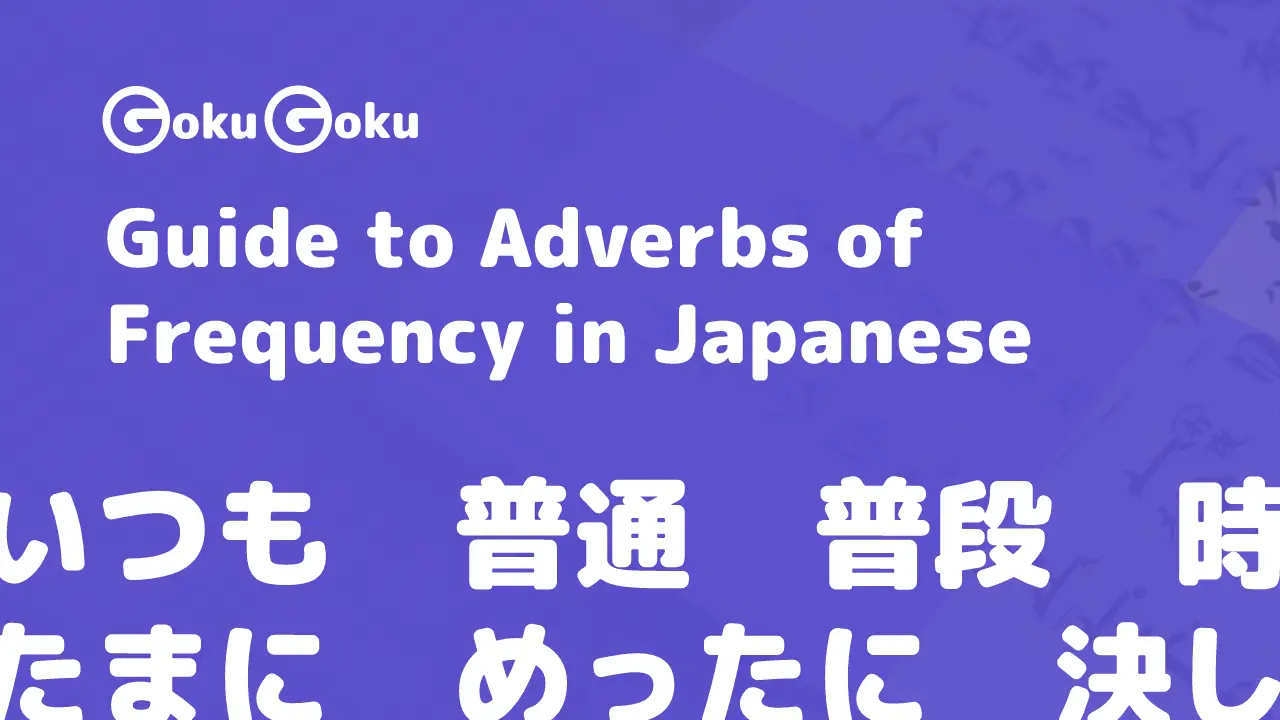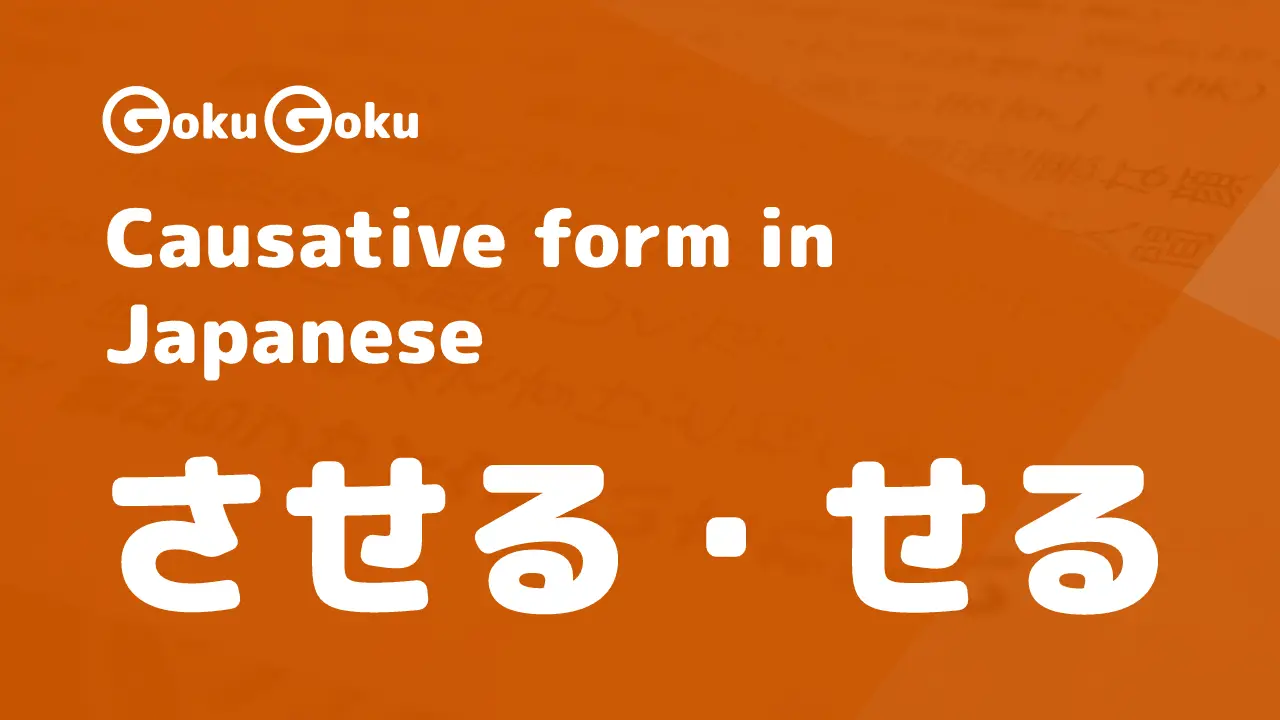We can summarise the Japanese potential form in 2 suffixes れる and られる and the verb できる.
- 可能形 kanōkei is the word indicating the potential (可能) form (形)
- 可能動詞 kanō dōshi are the potential verbs (動詞)
- 可能な kanō na is the な Adjective meaning
capable,realisable,feasible,achievable
The potential form in Japanese
The potential form is used to express the possibility and the ability to perform an action.
can dobe able to do
For Ichidan Verbs that have only one base, it is enough to omit the final る syllable and add the suffix られる for the plain form in the present affirmative,
- られない for the present negative,
- られた for the past affirmative,
- られなかった for the negative past tense.
- 決める
decidebecomes 決められるcan decide
- 起きる
wake upbecomes 起きられるcan wake up
早く寝ても朝起きられない。
Even if I go to bed early, I can't get up in the morning
For the Godan (5 bases) Verbs, we use instead the Base in E or B4 combined with the suffix る for the present affirmative in the plain form.
- 買う
buybecomes 買えるcan buy
- 読む
readbecomes 読めるcan read
Here are the other forms:
- B4 + ない: 買えない
can't buy, negative present, - B4 + た: 買えた
could buy, past tense, - B4 + なかった: 買えなかった
couldn't buy, negative past.
Irregular Verbs
- 来る
comebecomes 来られるcan come
- する
dobecomes できるcan do,can
Omission of ら in informal context
Note for Ichidan Verbs: in the suffix られる the syllable ら is often omitted:
For example you can find 食べられる as 食べれる.
This exceptional form is to be considered colloquial and informal, in case of examinations and in formal situations I recommend following the rule.
There is an expression that indicates the omission of ら and is Ra nuki kotoba ら抜き言葉, the term without ra.
Another example of omission is in the ている form which loses a vowel and becomes てる as in:
- 決めている informally 決めてる
- 飲んでいる colloquially 飲んでる
When to use the potential form in れる and られる
This form expresses the ability to do something and also the ability to perform a certain action. I am able to perform that action, I am capable of it.
There are no external impediments and I can perform (or cannot when negative) that action.
Let us see how particles behave in this form.
生魚を食べる。
I eat raw fish.
生魚が食べられる。
I can eat raw fish.
The meaning is that I have no problem eating raw fish, I have no impediment or resistance.
The potential form uses the particle が to indicate the object.
It is also possible to use を, with the exception of the verb できる which requires が.
真理子はフランス語が話せる。
Mariko can speak French.
Phrase / title of a blog on food tastes:
20年間納豆を食べれなかった僕が、つい最近納豆を食べれるようになった。
I couldn't eat natto for 20 years, but I was recently able to start eating it.
Forms of 食べる in the sentence:
- 食べれなかった: potential form in the past tense (without ら, informal)
could not eat - 食べれるようになった potential form in the past tense without ら + ようになる:
become able to eat
If you want to search for the conjugation of the verb the terms are 動詞の活用.
- 一段活用 ichidan katsuyō
conjugation of ichidan verbs - 五段活用 godan katsuyō
conjugation of godan verbs
The potential form with できる
This form is particularly used to express those activities that require preparation, study, application for which I can say I'm able to, I'm capable of.
How to form the structure with できる
The first form consists of:
- the subject (if expressed) with the は particle
- a noun followed by が
- and the verb できる.
This form expresses as anticipated the ability to perform a certain activity.
フランス語ができる。
I can speak French.
As you can see できる expresses a generic ability, it implies the fact that I can speak, can write, can understand.
できる in kanji is 出来る, being able to do.
Phrase from an article developing the theme of the artificial (人工) intelligence (知能):
人工知能ができること、できないことは何か?
What can and cannot artificial intelligence do?
The second form consists of:
- the verb in the base in U or dictionary form +
- こと or の with the meaning of
thing,situation - the particle が
- the verb できる
can
Here are the various forms of できる:
- できない in the present negative
- できた in the past tense
- できなかった in the negative past tense
私は嘘をつくことができない。
I am incapable of lying.
Comment on an Origami Tutorial Video:

とても簡単で、すぐに覚えることができました。
It was very easy and I was able to learn it immediately.
Differences between れる / られる and ことができる
The expression with できる is generally preferred in formal situations, while れる-られる is more informal and colloquial.
As a start, it is easier to use できる with the verb in the dictionary form and not have to think about the conjugation of the verb with the different suffixes.
嘘がつけない人。
A person who cannot lie.
- 嘘をつく
tell lies,lie - 1: 嘘をつくことができない adding ことができない:
can't lie - 2: 嘘がつけない conjugating the verb つく to the potential negative form つけない:
can't lie
Verb する and potential form
The structure composed by する combined with a noun replaces する with できる.
- 料理する:
cook - 料理することができる:
can cook
The potential form of the structure Noun + する is used in its abbreviated form and the sentence becomes: Noun + が + できる.
料理ができない。
I can't cook.
山田さんは車の運転ができない。
Mr Yamada cannot drive a car.
Verbs of perception
We have some verbs with two potential forms; these are the verbs related to the senses, to the perceptions:
- 見る
see,watch - 見られる
can see,can watch - 見える
be visible
If I say:
映画が見られる。
I can watch movies.
- I have TV at home, I have time, I have a cinema near my home, I can decide to see or not to see the film. I have the possibility, it's my choice.
Instead, I can say:
小さい字が見えない。
I can't read (see) small letters.
- I have problems of sight, I have physical impediments that do not allow me to see or there is no visibility due to weather (fog or rain). In these cases there is no choice or intention on the part of the subject, that is how it is.
レミの家の窓からエッフェル塔が見える。
The Eiffel Tower is visible from Remi's house window.
Another verb of perception commonly used:
- 聞く
hear,listen - 聞ける
can hear - 聞こえる
be audible
スマートフォンで音楽が聞けます。
You can listen to music on your smartphone.
- The device was made with this function, I can listen to the music or I can decide not to listen to it.
Instead, I say:
マンションの外の話し声や車の音がすごく聞こえる。
The sound of people talking and cars outside of the apartment building is very loud.
- These voices and noises come naturally, I have no choice.
Practising the potential forms
I suggest in the exercise to start with single verbs, exercise the various forms and then gradually make longer sentences.
- 行く
- 行ける
- 行けない
- 行けなかった
プールへ行けない。
I can't go to the swimming pool.
今日はプールへ行けない。
Today I can't go to the swimming pool.
今日は勉強があるのでプールへ行けない。
I can't go to the swimming pool today because I have to study.
We have seen rules and uses of verbs in the potential form and some suggestions on how to exercise this part.
それではまた!







